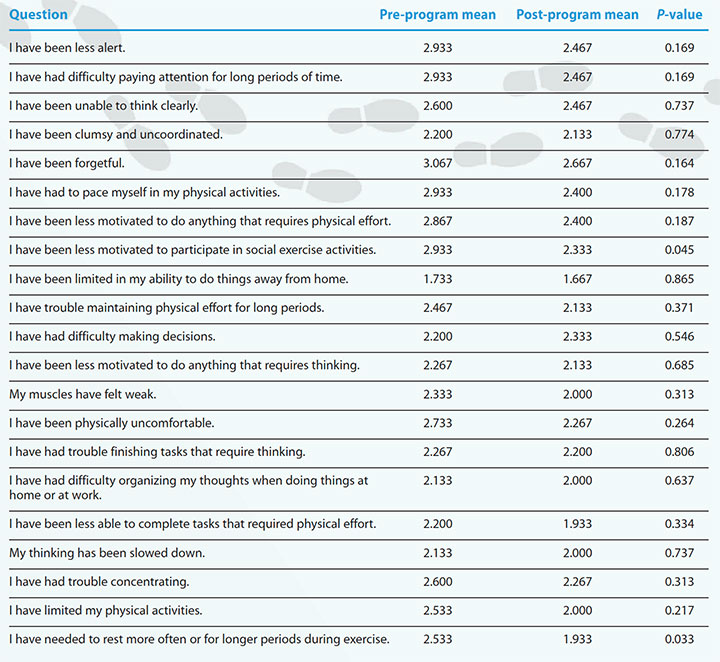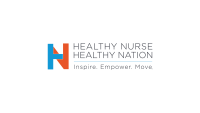Identify barriers and create structure to aid participation.
Takeaways:
- Supporting nurses to embrace a healthy lifestyle can have a positive outcome on their well-being.
- A structured walking program for nursing faculty and students improved motivation to participate in social exercise activities and exercised stamina.
Nurses are essential to fostering patients’ healthy lifestyle behaviors, including eating a healthy diet, exercising, and reducing alcohol and tobacco use. However, many nurses fail to adopt these behaviors for themselves. According to Priano and colleagues, between 60% and 74% of American nurses put their health at risk because of a lack of adequate activity.
To help current and future nurses embrace healthy lifestyle behaviors, the nursing faculty and students at the University of South Alabama College of Nursing joined forces to develop an 8-week structured walking program. The program was completed in October and November of 2019.
How the program worked
The walking program—which consisted of three 30-minute walking sessions per week on the university’s campus—was created by a team of nursing faculty. The team scheduled varying times to encourage participation, with at least one session scheduled during lunch hours and one after business hours on different days each week.
The university’s institutional review board approved the program, and all participants signed a consent form. At the beginning and end of the program, participants were asked to complete a survey on their current exercise and encouraged to complete an adapted 21-item Modified Fatigue Impact Scale (MFIS), which assesses the effects of fatigue on physical, cognitive, and psychosocial functioning. The surveys and assessments were distributed via email.
The walking program team collaborated with the school’s student nurses association (SNA) to recruit nursing students to participate in the program. SNA officers promoted the program to students in undergraduate nursing classes via word-of-mouth and flyers that were sent to faculty via email and posted around the school. Students didn’t receive any enticement (extra credit or point allocation) for participating, and they could stop at any time without penalty. Two weeks before the start date, the team sent encouraging emails to all nursing students and faculty, and an informational session and kick-off event were held to mark the start of the program. Participants received a complimentary pedometer and water bottle, and they were encouraged, but not required, to attend all sessions each week and log total steps taken during the program.
What we discovered
The participants (13 nursing students and 15 faculty) logged 550,287 steps. They logged only the steps taken during scheduled sessions. During demographic data collection, 10 participants responded that they didn’t take part in any type of exercise regimen. Of the 18 participants who did, 10 said that they exercised less than 3 hours per week.
All nursing students and faculty completed the voluntary pre-survey on exercise practices and the MFIS assessment; nine faculty members and six students completed the post-surveys (53.57% response rate). The low post-survey response rates can be attributed to the timing of survey distribution, which coincided with the end of the semester and final exams.
A paired t-test was completed between the 15 matched pre- and post-survey results. Responses were paired by matching the last six digits of the participant’s student or employee number. Participants reported statistically significant improvement (p≤0.05) in their motivation to participate in social exercise activities (p=0.045) and enhanced exercise stamina (p=0.033). No statistically significant improvement was noted in perceptions of mental and physical fatigue after participation. (See Program outcomes.)
Program outcomes
Participants completed a Modified Fatigue Impact Scale before and after the 8-week program to assess their perceptions of fatigue. They rated the questions on a 0 to 4 scale (0=Never, 1=Rarely, 2=Sometimes, 3=Often, 4=Almost always).


Lessons learned
Earlier promotion of the program (at least 1 month in advance) using a variety of methods (emails, flyers, face-to-face visits in classrooms and offices) might encourage greater participation. The initial 2-week notice didn’t allow adequate time for participants to adjust their schedules and study habits.
According to Blake and colleagues, when compared to medical students, nursing students typically are less active because they perceive fewer benefits and report less social support for exercise. A literature review indicates that the most notable barriers to student participation in exercise include lack of time, inconvenient facility schedules, and study or clinical time conflicts. Barriers for faculty include a perceived high course workload and family commitments. Although the walking program team carefully planned walking schedules to include sessions during perceived downtimes (lunch and after hours), participation remained low compared to other scheduled sessions. A baseline survey to identify appropriate walking times might increase participation.
On-campus, in-person collaborative health efforts were halted in response to the COVID-19 pandemic, so the nursing faculty–student structured walking program isn’t offered currently. The development team plans to meet with the university’s health and wellness committee to investigate initiating a campus-wide exercise program to promote health of the entire faculty and student body.
Jumpstart health
The stress associated with nursing can negatively impact physical and emotional well-being. As we learned, a structured walking program that includes social support can help jumpstart healthy lifestyle behaviors. Nurses also may wish to participate in the American Nurses Association program Healthy Nurse, Healthy Nation™, which supports improving nurses’ health in five domains: physical activity, nutrition, rest, quality of life, and safety of nurses. The American Association of Colleges of Nursing is a partner in the program. Learn more at healthynursehealthynation.org.
Kimberly Jordan is an assistant professor at the University of South Alabama (USA) College of Nursing in Mobile. Tyler Sturdivant is a nursing instructor at Coastal Alabama Community College in Bay Minette. Katherine Bydalek is an associate professor at USA College of Nursing.
References
American Nurses Association. ANA enterprise and AACN partner to launch student ambassador program. American Nurse Today. 2019;14(3):32.
Blake H, Stanulewicz N, Mcgill F. Predictors of physical activity and barriers to exercise in nursing and medical students. J Adv Nurs. 2017;73(4):917-29. doi:10.1111/jan.13181
Fisk JD, Ritvo PG, Ross L, Haase DA, Marrie TJ, Schlech WF. Measuring the functional impact of fatigue: Initial validation of the fatigue impact scale. Clin Infect Dis. 1994;18(suppl 1):S79-83. doi:10.1093/clinids/18.supplement_1.s79
Priano SM, Hong OS, Chen J-L. Lifestyles and health-related outcomes of U.S. hospital nurses: A systematic review. Nurs Outlook. 2018;66(1):66-76. doi:10.1016/j.outlook.2017.08.013
Ross A, Bevans M, Brooks AT, Gibbons S, Wallen GR. Nurses and health-promoting behaviors: Knowledge may not translate into self-care. AORN J. 2017;105(3):267-75. doi:10.1016/j.aorn.2016.12.018


















